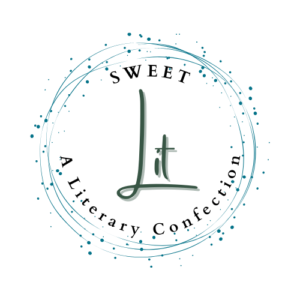Poet, essayist, and visual artist, Shelia Squillante has been hard at work directing the MFA program in creative writing at Chatham University and cultivating a collection of personal essays centered around grief, love, and food titled “All Things Edible, Random & Odd,” published by CLASH Books in November of last year.
I had the pleasure of meeting Squillante in a bustling coffee shop filled with college students to discuss her chosen art forms and latest publication.
CS: Do you view the various types of art you do as separate or closely related?
SS: I would say that they are mostly separate, though this is changing to some degree. I am new to visual arts, but I’ve been writing since I was five. Three years ago, I started painting and it has become part of who I am… But I am trying to figure out the answer to this.
I believe my painting is connected to my work with lyric essay and poetry. My paintings are abstract, so they are suggestive and elliptical, and that’s what poetry is. I have some narrative poems, but I am still working out this relationship. In order to help work it out for myself.
I am launching a podcast called My Other Pen, to talk to writers who have more than one creative practice. Hopefully, talking with other writers will help me to better answer this question.
CS: Do you have a portion of your book that you wish your readers would pay close attention to?
SS: It depends on the day. I am very fond of a couple of the essays that came about very early on, because the book took a very long time to come together. My piece “Four Menus” was probably the first piece I wrote in my nonfiction writing career that I felt was something that would last. So, that piece is very important to me.
The last piece in the book is a bridge between this project and the next. This book was primarily about my father’s death, with other things, and the next project is about my mother’s death.
CS: Do you have a favorite recipe to make for yourself?
SS: I have two answers. The first answer is one that isn’t a recipe, it’s an ‘assemblage.’ If it’s just me, I want nothing more than really good crackers, good bread, cheese, olives — food on a board.
The other day, I was thinking back to when I was single. One of my favorite things to make was a very simple pasta with roasted vegetables, goat cheese, and a little olive oil. Now, no one in my family would eat that, so it is definitely something that I would only make for myself.
CS: Do you have a favorite recipe to make for others?
SS: My standard answer to that would be pasta puttanesca — spicy. That one is a favorite of my husband and my son, though my daughter won’t eat it. I love to make that as an expression of deep love for them.
CS: What do the words “comfort food” mean to you?
SS: It’s food that connects me to certain people in my life, so not mac & cheese for me, necessarily. I think of my mom’s linguine with clam sauce or cream cheese with green olive spread that my father used to make. I only have these foods with certain people, so when I eat them, I am taken back to those moments.
CS: Are there works of art — literature or otherwise — that have had a profound impact on your creative process?
SS: I get really inspired by music, and I write about music. But in terms of other pieces of literature…not that my book does this necessarily, but I like when nonfiction writers play with form. My book does play with form. I love Maggie Nelson’s Bluets, but I want to be very careful not to compare my book to hers. I love that book. I love what she does with it, and it gives me permission to play with form.
Crying in H Mart by Michelle Zauner is another inspiration of mine. I taught that book a year after it came out to my students without having read it. I knew that it was about a mother-daughter relationship, food, and death, so I brought it to the classroom.
I read the book for the first time with my students and it is about those things, but there were just so many uncanny similarities to my book, which originally started as a memoir. I thought I was just writing a memoir about my father and my relationship with him through sharing food — food was the way we talked to each other. That’s what Crying in H Mart is about, too.
I got to the last chapter and Michelle Zauner talks about the essay contest that she won for Glamour Magazine. At that point, I screamed and threw the book against the floor — not actually — but because I won that contest the first time they ever ran it in 2003 or something like that.
After I won that contest, I started my nonfiction career. I met with an agent as a part of that prize and she asked me if I had a book-length project that I wanted to work on. I told her that I wanted to write about my father who died when I was in college through the lens of food. She said “Great, go write that book.”
So, I went off and tried to write that book. When I came back, she said ‘This is good writing, but it isn’t sale-able. It isn’t a memoir, it’s more of a mosaic through essays.’ So, I was never able to make that version of the book work, but Michelle Zauner did! Maybe I’ll send her a copy…
Bluets and Crying in H Mart couldn’t be more different in terms of form, which excites me because I write very fractured essays and I write straight-forward narrative memoir.
CS: Have you seen memoir change in the time that you’ve been writing creative nonfiction?
SS: Yeah, a bit. This book is more of a ‘mosaic.’ It’s essays. I’m seeing that term more and more, at least in some parts of the publishing world, as they become more interested in the essay as a publishable form. This seems to have opened up a space, whereas before in 2003, you could only write straightforward narrative, which is what I was taught in graduate school to write.
However, I also hear that agents still say that any kind of memoir, whether it is straightforward or fractured, is going to be a hard sell if you’re not already a celebrity or you haven’t already ‘made it.’
CS: Do you believe that grief is something that we’re able to overcome or does it persist?
SS: I don’t think of ‘overcoming’ grief. That word signals to me that a door has closed and we’re on the other side of it. We are never on the other side of grief. The shape of it changes — the viscosity of it changes — as we get farther away from the moment of it. If you are somebody who has experienced loss, then you know this already, you know that grief can hit you like a tsunami years after the event.
I don’t think we get over grief, but I think it changes. I wouldn’t want to get over grief, either. It is as important an emotion as love is. In fact, I think it is love, but it is love that has gone through something hard.
If we manage to ‘wrap up’ grief, we’re repressing it. Yes, we have to move forward, but you never put the package of grief down, it just gets smaller.
CS: Do you feel that the act of writing is a form of healing?
SS: Sure, it has. This book ended up being not just about my father but about my ex-husband, his family, and my children. Reading through it, I can see my own growth as a person, which is powerful to see. Completing it has put me in a position where I have more faith that I can do the next project, which I think is going to be much harder to write. Did it help me heal? Yes, but it also armored me up for the next thing.
CS: I think that was a perfect way to wrap up this conversation.








